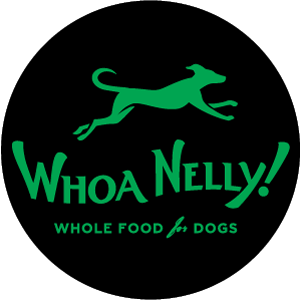Why Dogs Need Iodine
As a Canine Nutritionist I’ve analysed many homemade diets for dogs, and one of the most common problems is a lack of iodine. Over half of the diets I’ve looked at are deficient. Not great, but luckily it’s easily preventable!
Iodine is an essential but often overlooked part of your dogs diet. In fact, it’s so important that “iodised salt” (ie. commercially adding iodine to salt) was created as a public health initiative for humans. Introduced in the 1920s in Switzerland and the USA, it was adopted by the rest of the world - including Australia - and is still available today.
While I would never recommend feeding iodised salt to your dog (too much sodium), it’s important that there is a source of iodine in their diet.
In This Article
What is iodine?
Iodine is a trace mineral that is essential to normal thyroid function. It’s involved in the production of the two hormones the thyroid produces: thyroxine and thyronine. These hormones are needed for the regulation of cell activity, normal growth and development, and the regulation of the metabolism.
While iodine is only needed in very small amounts, it’s important to have a dietary source otherwise your dog will be deficient. Long term deficiency often presents as the enlargement of the thyroid gland, causing swelling in the neck called goitre. Other symptoms include hair loss, dry skin, weight gain, excess saliva, nasal discharge, eye tearing and dandruff.
Sources of iodine
These are the main foods which contain significant amounts iodine:
Kelp
Cod
Egg yolk
Oysters
Sunflower seeds
The easiest way to include iodine in your dogs diet is by adding kelp. You can purchase it at your local health food store or online. I find kelp is the best way to add iodine into the diet because it is naturally rich shelf stable dried food, which makes it easy to store and handle.
How To Feed
While we want to have enough iodine present in the diet, it’s also important to not feed too much. One study found that excess amounts of iodine present in some commercial extruded diets cause a significant impairment of thyroid function and potentially hypothyroidism.
For this reason supplementation can be tricky. Iodine is a Goldilocks nutrient: you need to have just the right amount - not too little and too much. The aim is to meet the minimum standard as set by the NRC but to not exceed it by a significant amount - what we call the “optimal” amount.
Dry food: it is likely there is already a high dose of synthetic iodine in the food and I wouldn’t suggest supplementation except for a medical reason (and under direction from your dog’s health care practitioner).
Commercial raw food: make sure it has a dietary source of iodine. Ask the manufacturer how much iodine is in it - you want about 220mcg per 1000kcal. If they are unable to provide you with that information then the food is not properly formulated.
Home made diet: you need a source of iodine in the food you make for your dog. The amount of iodine varies significantly depending on the source, so take this with a (non-iodised) grain of salt: a general rule of thumb is to feed 1g of kelp per kilogram of food. This is of course just a general guide and will vary depending on many factors.
As always, for the correct dosage for your dog it’s always best to talk with a qualified canine nutritionist or your vet 🐾



